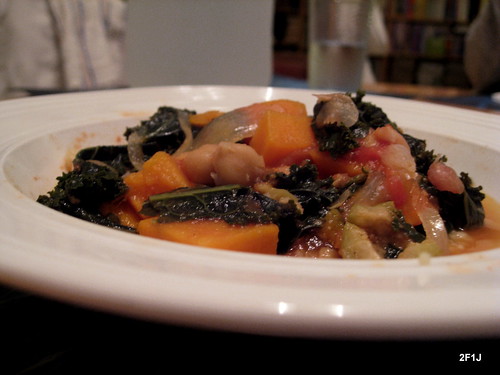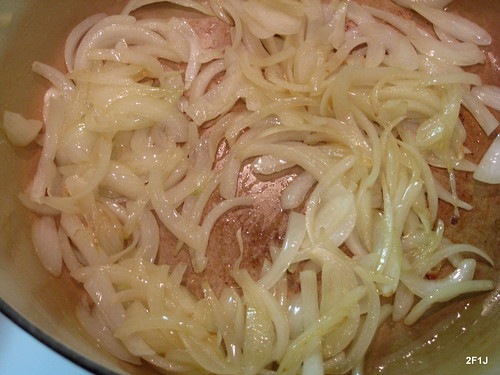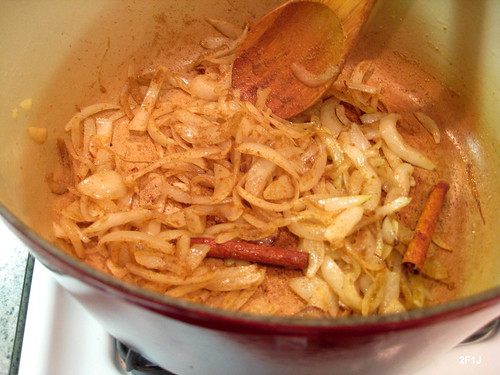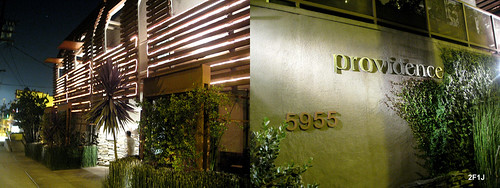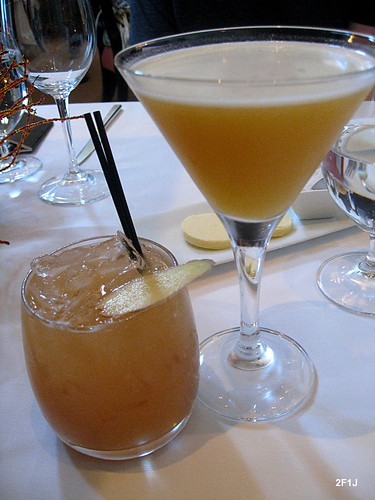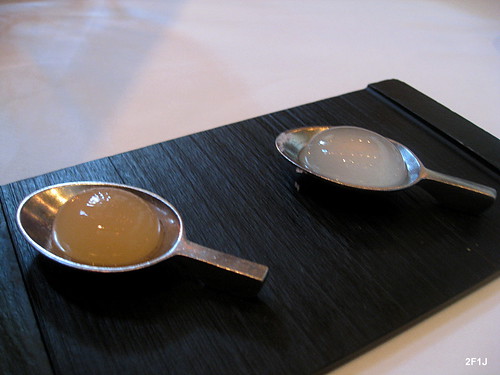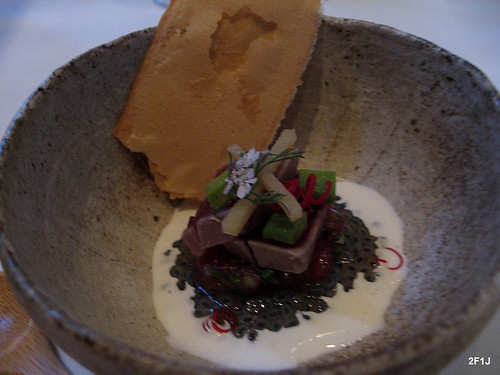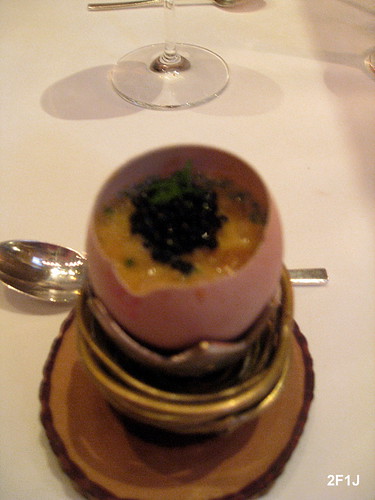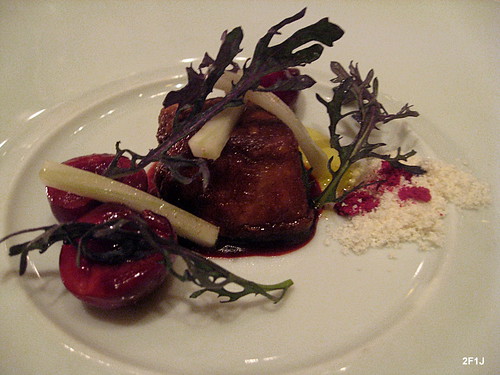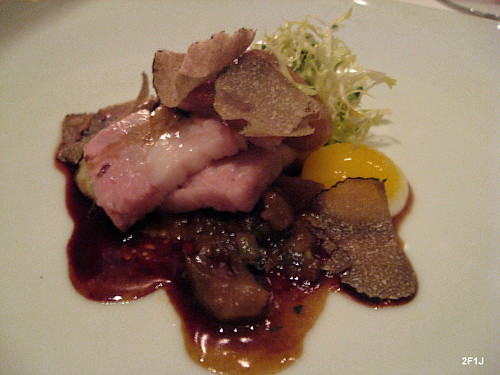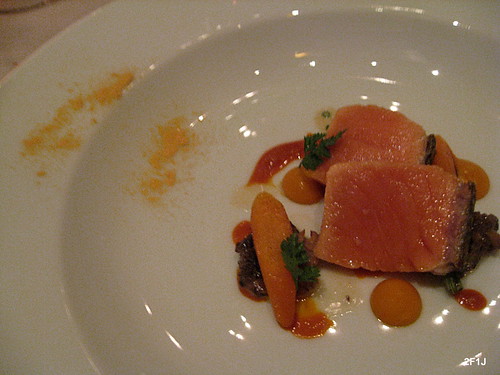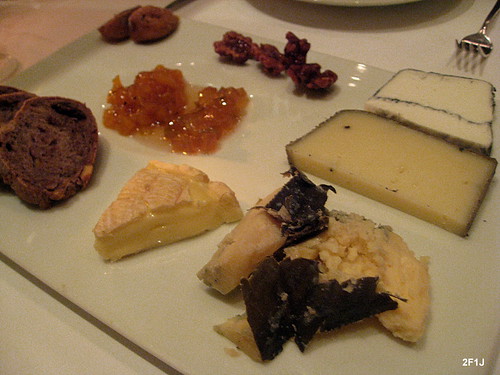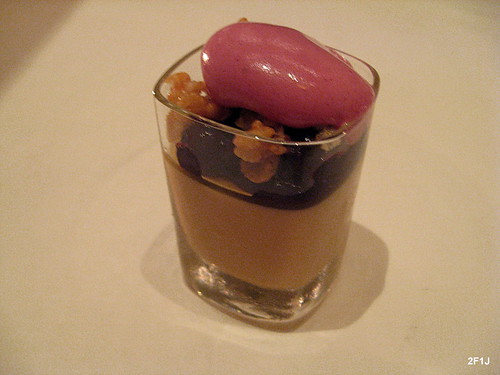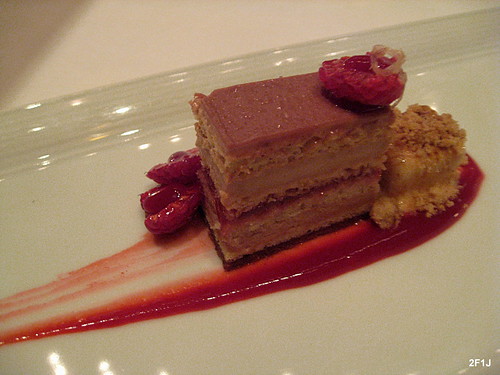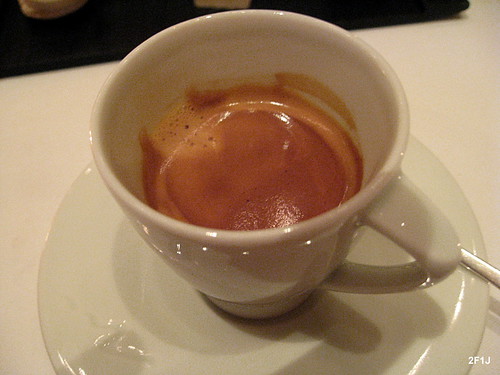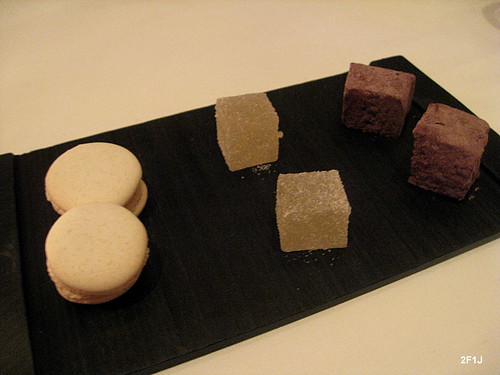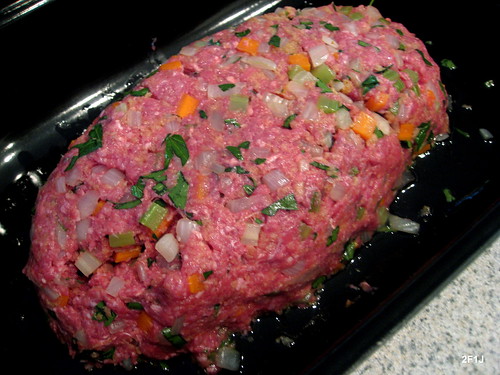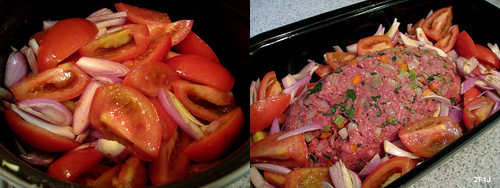As foodies we often feel the dilemma of having to decide if we want to experience something new or indulge into some tried classics. Might it be at home when we have to decide what kind of recipes we want to try for the next dish or when we have to determine which restaurant to visit next. The next restaurant visit might be relatively easy to agree on if it is for the city you live in, but it gets really tricky if it is for a city you just visit, even if that happens quite often. Over the last few years our travels to Los Angeles have become a regular habit and have provided us with many memorable dining memories. But every time before we go to LA it takes quite some time to nail down our culinary tour. It is always a struggle to find the best balance between trying new spots you heard or read about and some of our favorites. Our list of favorites includes rather newer additions to the LA dining scene as
Bistro LQ or
Animal, but one restaurant which we “discovered” early on and liked from the first course we experienced there is
Providence.
Providence represents for us what fine dining is all about – very creative cuisine using the best possible ingredients, extensive multi-course tasting menus, impeccable execution in the kitchen, knowledgeable and good service without being stuffy, and a relaxing ambience. For us Providence is a restaurant for special occasions but we always make sure to “find” enough opportunities so that we can visit it more than once each year.
Providence was started in 2005 by executive chef/co-owner Michael Cimarusti and Donato Poto (co-owner and Maitre d’, formerly General Manger at Bastide). Chef Cimarusti experienced a career path similar to many high profile chefs. He graduated from one of the top-ranking schools (Culinary Institute of America in Hyde Park, NY) before working under many acclaimed chefs as Paul Bocuse, Gerard Boyer and Roger Vergé at Le Cirque in New York. During this time he also married his wife Cristina Echiverri, a pastry chef, and both decided to move to France and continue their culinary education by working at La Mareé and Arpège. After returning to New York Cimarusti became the opening chef of Osteria Del Circo. He then decided to move to Los Angeles to work as Chef de Cuisine at Spago before he became in 1997 executive chef of Water Grill. After seven years at Water Grill he finally opened his own restaurant – Providence. Providence became an instant success and got a James Beard nomination for “Best New Restaurant” in the US in its first year.
Providence has several different menu options – you can of course also order à la carte. They also offer a five course tasting menu, a full tasting menu, but every time we go to Providence we prefer to order the best way to fully experience this restaurant – the chef’s tasting menu. After ordering it you simply sit back, relax and wait for good things to come. It will be a long and exciting culinary trip.
Providence is located on Melrose Ave, a little but further east of Hatfield’s and both Mozza restaurants. It occupies the old Patina building and has some interesting architectural features outside using wood which makes it easily recognizable.
The restaurant has two dining rooms. This time we got our table in the main one. This room has mainly brown/beige colors and is a wide open space. Since we favor more private tables we often try to get one of the booth-like tables at one side of the room. The walls are decorated with barnacles and fit nicely to the seafood focus of the restaurant.
We also like the lights on the tables which resemble corals.
We started the night with two cocktails: Cyanide Kiss – Remy VSOP, ginger infused sake, white peach puree, licor 43, savory herb. Asian Pear Martini – Stolichnaya vanilla vodka, sake, passion fruit, monin vanilla syrup, organic pear juice. We always enjoy the cocktails at Providence which are creative and well executed. Both cocktails had a nice balance between fruitiness and alcohol. The Asian pear martini was one of the first cocktails we tried here and it is still our favorite. It’s good to know that you can also get it at Copa d’Oro, the cocktail bar of former Providence mixologist Vincenzo Marianella.
Providence has a very good bread selection with the bacon brioche as our highlight. Cute little scoop for the salt.
1st Amuse Bouche: Greyhound, Margarita
One of the well known amuse bouche of Providence and an interesting play on spherification. Both “cocktails” tasted very much like their real versions.
2nd Amuse Bouche: Squid and chorizo
Nice presentation of this simple but tasty course – very tender grilled squid and slightly salty chorizo eaten together give a good combination.
1st Course: Kanpachi, lemon, olive oil, black truffle
Firm but tender/buttery kanpachi was accompanied by cucumber, some lemon and black truffle but not overpowered. The olive oil gave it an additional fruity note and the crispy rice cracker some textural counterbalance.
2nd Course: Big eye tuna, basil seeds, pickled ginger
Relatively fatty but very tender, slightly seared tuna with a texture not unlike very good beef in steak tartar. We liked the slightly sour combination of pickled ginger and the crème fraiche based sauce. Similar to the first course, a cracker provided some textural variety. We also enjoyed the presentation of this dish in the earthen bowl and the wooden spoon. Pairing: Junmai dai ginjyo, kanchiku – we rarely drink sake but we thought it paired nicely to this course with its light rice taste at the beginning and some floral/fruity notes at the end.
3rd Course: Santa Barbara sea urchin served in a farm fresh egg, champagne beurre blanc, fines herbes, caviar
This was one of the two courses we already had in previous tasting menus but it was a welcome repeat. The sea urchin, yolk and beurre blanc were mixed to a creamy and rich mixture whereas the salty caviar helped to cut through this richness. We wished that the taste of uni could have been a bit more pronounced. Pairing: Crémant de bourgogne “blanc de blancs,” domaine parigot & richard m.v. – Champagne blend which was not too dry or sweet with some apple aroma.
4th Course : Grilled Santa Barbara spot prawn, lemon, olive oil
This course was the second dish we already had previously,but again we weren’t sad to have it again. It was prepared by Donato Poto tableside. Many dishes at Providence are often fairly complex with many ingredients but this dish shows that simplicity can be equally satisfying. The prawns are roasted in salt and rosemary and just served with olive oil and lemon. The perfect way to eat this sweet and flavorful prawns. Pairing: Sauvignon blanc new zealand, te muna road vineyard, craggy range 2008 – Appropriate acidity for the prawns with fruit at the finish.
5th Course: Unagi and abalone, daikon, dashi, scallions
Very nice combination of flavorful freshwater eel, which wasn’t overly fatty, and tender abalone. The use of dashi foam really brought this dish together and showed that foams can be used as more than a gimmick. Pairing: Chardonnay langhe, ettore germane 2009 – Typical Chardonnay with some oak taste.
6th Course: Foie gras, cherries, mizuna, fennel
Perfectly seared foie gras paired with not too sweet cherries to balance the richness of the foie gras. The addition of anise-flavored fennel and peppery mizuna gave the dish a more complex twist compared to the regular sweetness – richness pairing of foie gras dishes. Providence often likes to work with powders of some of the ingredients. In this dish foie gras and cherry powder helped to intensify the flavors. Pairing: Riesling kabinett, kaseler nies’chen, erben von beulwitz 2007 – As expected for a pairing with foie gras the wine had some sweetness with tones of apples and peaches.
7th Course: Pork belly and porcini, polenta, summer truffles, fried quail egg, miner’s lettuce
The pork belly was very tender and had an interesting texture not unlike pastrami or meat cooked sous-vide. The sauce with fresh porcini mixed together with the quail egg was a good companion for the pork. The truffle added the desired addictive flavor without overpowering the dish. Pairing: Pinot noir, maranges le croix moines, 1er cru, camille giroud 2007 – Relatively dry wine with some sour cherry flavor.
8th Course: Skeena river king salmon, hazelnuts, morels, roasted baby carrots, pea tendrils
This dish was all about the salmon and carrot flavor. Lightly seared salmon belly and roasted carrots made an unusual combination which worked nicely. The carrot flavor was boosted by the carrot sauce and carrot powder. Pairing: Pinot noir, sangiacomo vineyard, vergari 2007 – The second Pinot Noir had some acidity with spice and raspberry flavor.
9th Course: Lamb saddle, tomato compote, chorizo, cauliflower
There were a lot of things going on in this dish. Not only was this plate very colorful but also had many different flavors – slightly gamey lamb with a flavorful basil crust, sweet-sour tomato compote, saltiness from the chorizo and subtle smokiness from the roasted cauliflower – but the dish came really well together once you tried everything. Pairing: Red blend slovenia “veliko,” movia 2002 – You don’t often see wines from Slovenia on restaurant wine lists in Los Angeles. Balanced wine with notes of tobacco, leather and some berries.
10th Course: Cheese selection
Providence has a very good selection of cheese so that we covered an array of goat, sheep and cow cheeses. Unfortunately they were out of our beloved Epoisses but had at least some Muenster. The bread and condiments, figs, walnuts, apple gelee, were good but paled in comparison to our favorite cheese plate at Bistro LQ. Pairing: Welschriesling Beerenauslese, rosenhof 2006 – Unusual pairing for the cheese course with this sweet wine. Not a bad Beerenauslese but we would have preferred a more classical pairing with a red wine.
11th Course: Coconut milk-pandan soup, thai-flavored granita, mango jelly, fried banana
Desserts are always a highlight at Providence with the impressive creations of pastry chef Adrian Vasquez. The first dessert course was no exception and showcased his strength by using many different flavors which you can taste individually but that combine in your mouth to more than just its sum. The coconut milk-pandan soup with the tapioca formed the earthy base for the fruity flavors of the granita, jelly and lightly fried banana. Very strong start for the dessert part of the tasting menu.
12th Course: Dulce de leche-miso panna cotta, blueberries, passion fruit & buckwheat
The use of miso for the dulce de leche panna cotta puts this dessert to the next level and gave this dish an addictive umami flavor. The blueberries and the passion fruit lightened the creaminess of the panna cotta whereas the buckwheat added some textural counterbalance. Only disappointment was not to be able to get seconds of this dessert. Pairing: Moscato d’asti “riveto,” dante rivetti 2009 – Sweet wine with some notes of honeymelon.
13th Course: Milk chocolate mousse, raspberry ginger, hazelnut marshmellow
A great finish to the tasting menu with the light milk chocolate mousse cake and hazelnut marshmellow.
Good coffee too from LAMill which is not surprising due to the close connection between Providence and LAMill.
Petit Fours: And the night ended with some tasty treats
The moment we stepped into Providence we knew that it would again be an outstanding night. It is always a good sign if people who work in a restaurant remember you and welcome you with a handshake and you just start chatting with them. This time they didn’t even bother to give us a menu and just asked us if we wanted to have the chef’s tasting menu like the other times before. Part of the good service at Providence is that you never feel rushed and you immediately get the feeling that everybody there is interested to let you experience the best possible night without being overly stuffy or formal. This high level of enthusiasm of the front of the house is also easily recognizable in the work of the kitchen. The tasting menus are constantly evolving and a burst of creativity. The kitchen shows a good balance between focusing on the quality of the single ingredients and creating complex dishes with a talent for small details which improve the dish, e.g powders, foams, without being complex just to impress. Providence is often characterized as a seafood restaurant but we feel this description falls short to capture the restaurant. The meat dishes are in no way less impressive than the seafood preparations and show the depth and confidence of the kitchen. The desserts at Providence earn a specific mentioning as we feel that pastry chef Adrian Vasquez creates some of the best desserts we have eaten anywhere. And it is time for us to try one day his dessert tasting menu.
After an exiting and never boring five hours culinary trip we left Providence as one of the last guests and already on the way out we discussed when we will "find" the next occasion to come back soon.
5955 Melrose Avenue
Los Angeles, CA 90038-3623
(323) 460-4170
